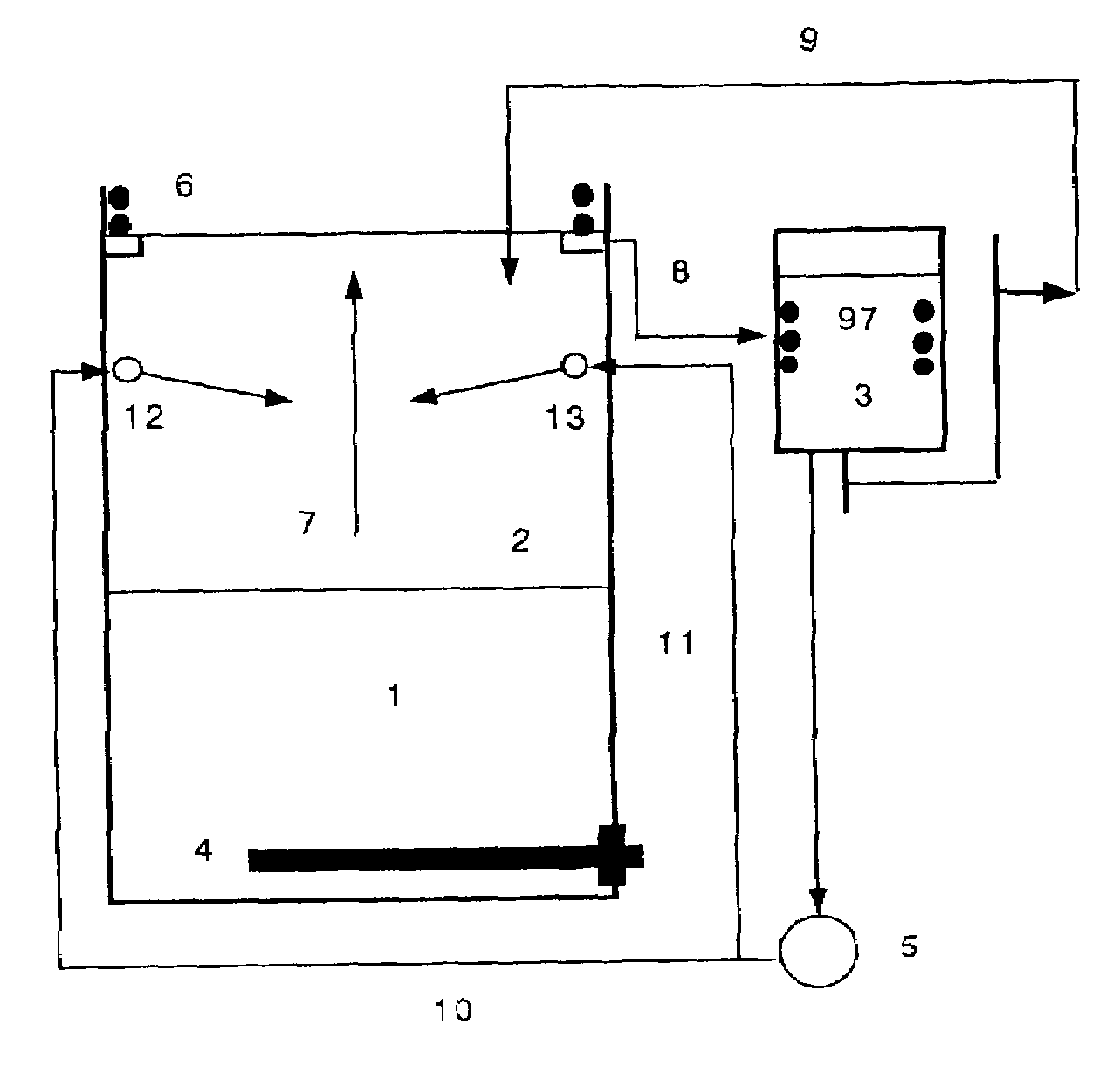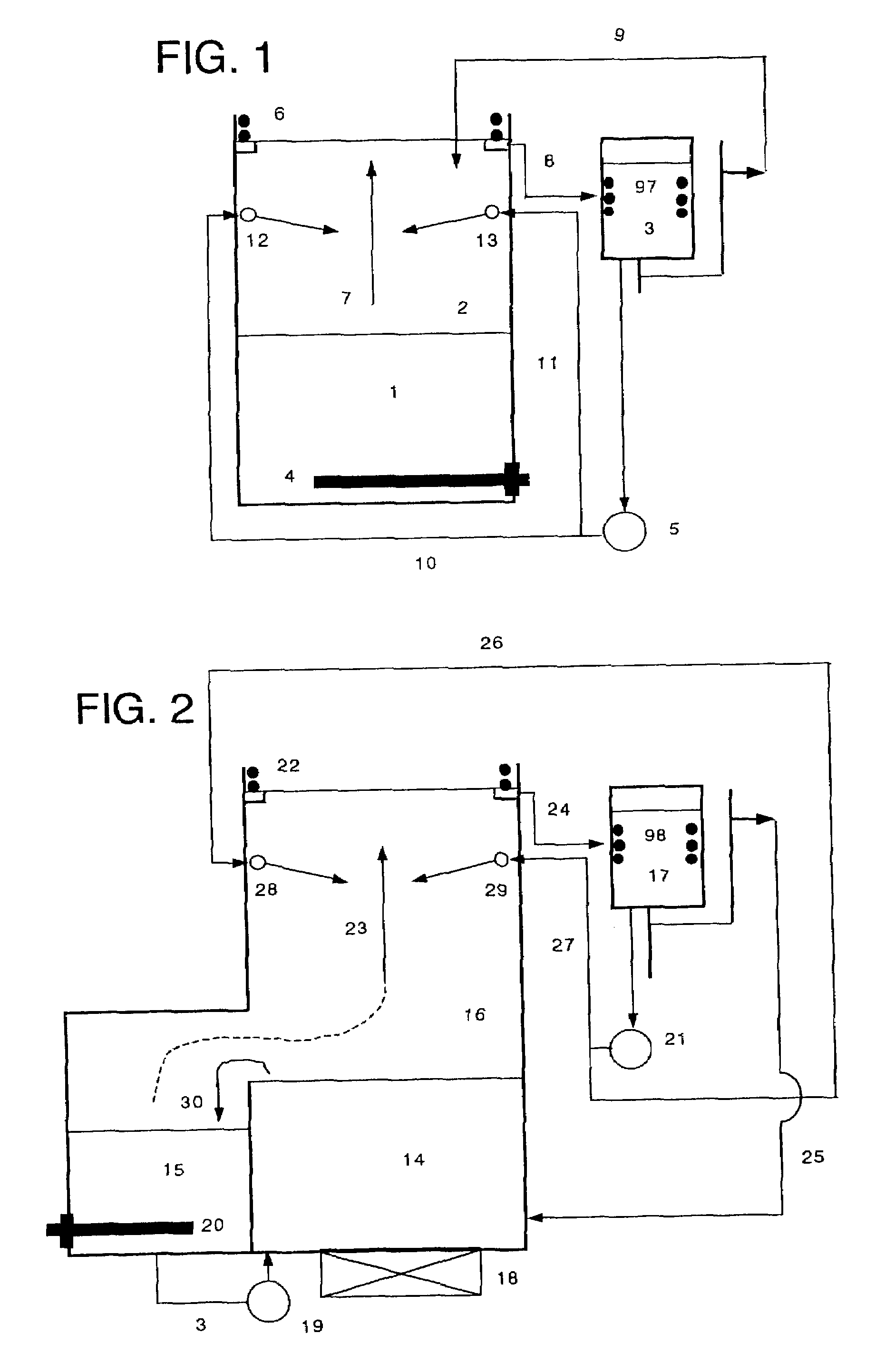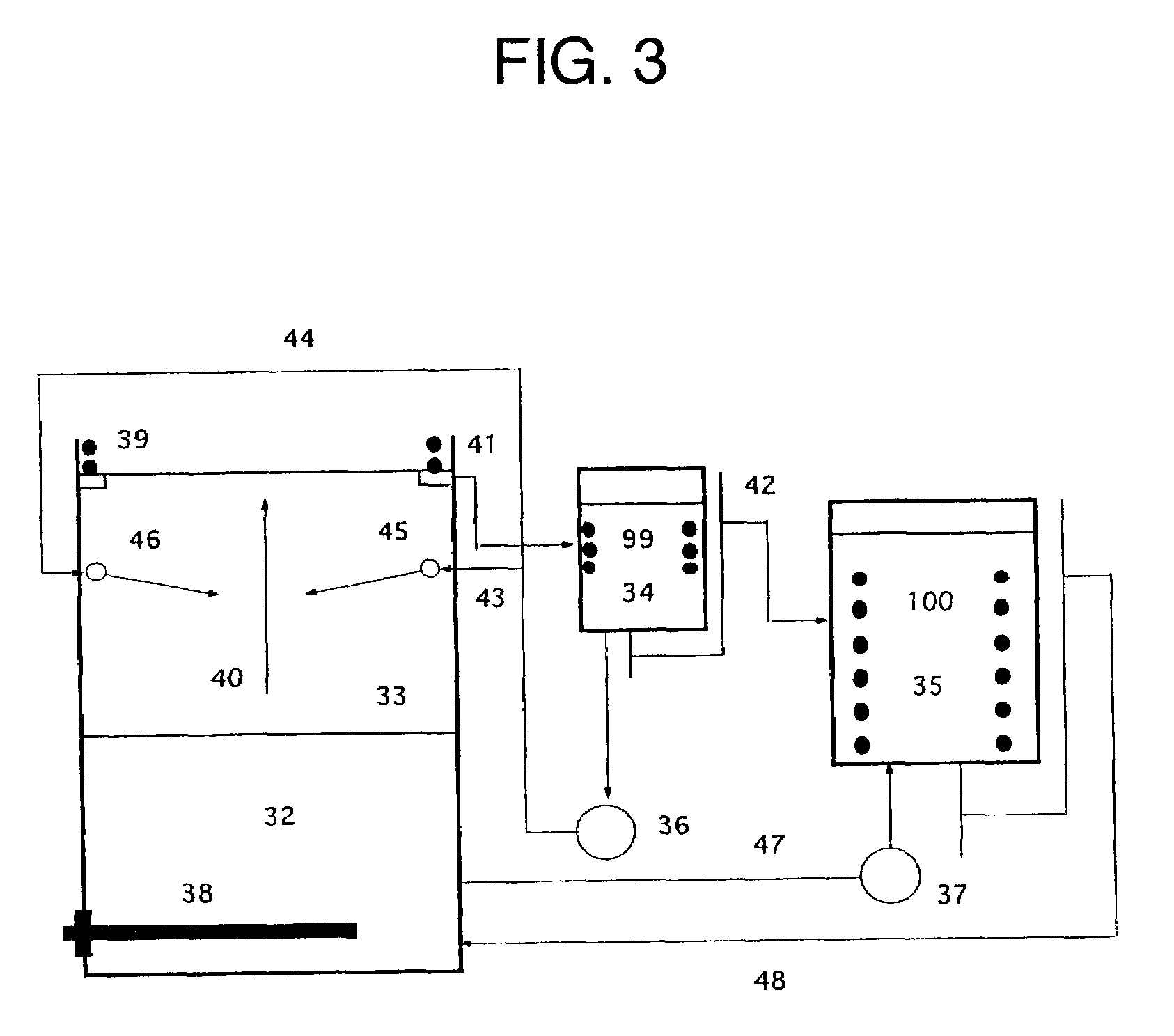Cleaning agent, cleaning method and cleaning apparatus
a technology of cleaning agent and cleaning method, which is applied in the direction of cleaning using liquids, detergent compounding agents, liquid soaps, etc., can solve the problems of inferior dissolution ability, metal corrosion and deterioration of insulation, environmental pollution of the earth, etc., to prevent oxidation deterioration, prevent oxidation deterioration, and high cleaning power
- Summary
- Abstract
- Description
- Claims
- Application Information
AI Technical Summary
Benefits of technology
Problems solved by technology
Method used
Image
Examples
examples 1 to 8
[0229]Each component in the proportion described in Table 1 was mixed to obtain the desired rinsing agent. With respect to each rinsing agent, its flash point was measured and the results were summarized in Table 1. It was confirmed that the flash point disappeared when (a1) the chlorine-free fluorine-containing compound having a vapor pressure of not less than 1.33×103 Pa at 20° C. and (b) the component having a vapor pressure of less than 1.33×103 Pa at 20° C. were used in combination.
examples 9 to 22
[0230]Each component in the proportion described in Table 1 was mixed to obtain the desired rinsing agent. With respect to each rinsing agent, its flash point was measured and the results were summarized in Table 1. It was confirmed that the flash point disappeared when (a1) the chlorine-free fluorine-containing compound having a vapor pressure of not less than 1.33×103 Pa at 20° C. and (b) the component having a vapor pressure of less than 1.33×103 Pa at 20° C. were used in combination. It was further confirmed that the flash point entirely disappeared when (a1) the chlorine-free fluorine-containing compound, (a2) at least one compound selected from the group consisting of alcohols, ketones, esters and hydrocarbons, and (b) the component having a vapor pressure of less than 1.33×103 Pa at 20° C. were used in combination, provided that the complete disappearance of the flash point could not be confirmed when only the component (a1) and the component (a2) were used in combination, bu...
examples 23 to 39
[0246]Each component in the proportion described in Table 3 was mixed to obtain the desired cleaning agent. With respect to each cleaning agent, the cleaning test was carried out and the results were summarized in Table 3. When (a1) the chlorine-free fluorine-containing compound having a vapor pressure of not less than 1.33×103 Pa at 20° C. and (b) the component having a vapor pressure of less than 1.33×103 Pa at 20° C. were used in combination, there could be obtained a cleaning agent superior in dissolution property against oil, rosin and flux. It was further confirmed that a higher cleaning effect could be obtained in a combination use of the component (b1) and the component (b2) and in a combination use of at least two components (b) selected from the group consisting of glycol ethers, glycol ether acetates and hydroxycarboxylic acid esters.
[0247]It was still further confirmed that the amount of the component (b) could be decreased without detriment to the superior cleaning prop...
PUM
| Property | Measurement | Unit |
|---|---|---|
| vapor pressure | aaaaa | aaaaa |
| vapor pressure | aaaaa | aaaaa |
| melting point | aaaaa | aaaaa |
Abstract
Description
Claims
Application Information
 Login to View More
Login to View More - R&D
- Intellectual Property
- Life Sciences
- Materials
- Tech Scout
- Unparalleled Data Quality
- Higher Quality Content
- 60% Fewer Hallucinations
Browse by: Latest US Patents, China's latest patents, Technical Efficacy Thesaurus, Application Domain, Technology Topic, Popular Technical Reports.
© 2025 PatSnap. All rights reserved.Legal|Privacy policy|Modern Slavery Act Transparency Statement|Sitemap|About US| Contact US: help@patsnap.com



